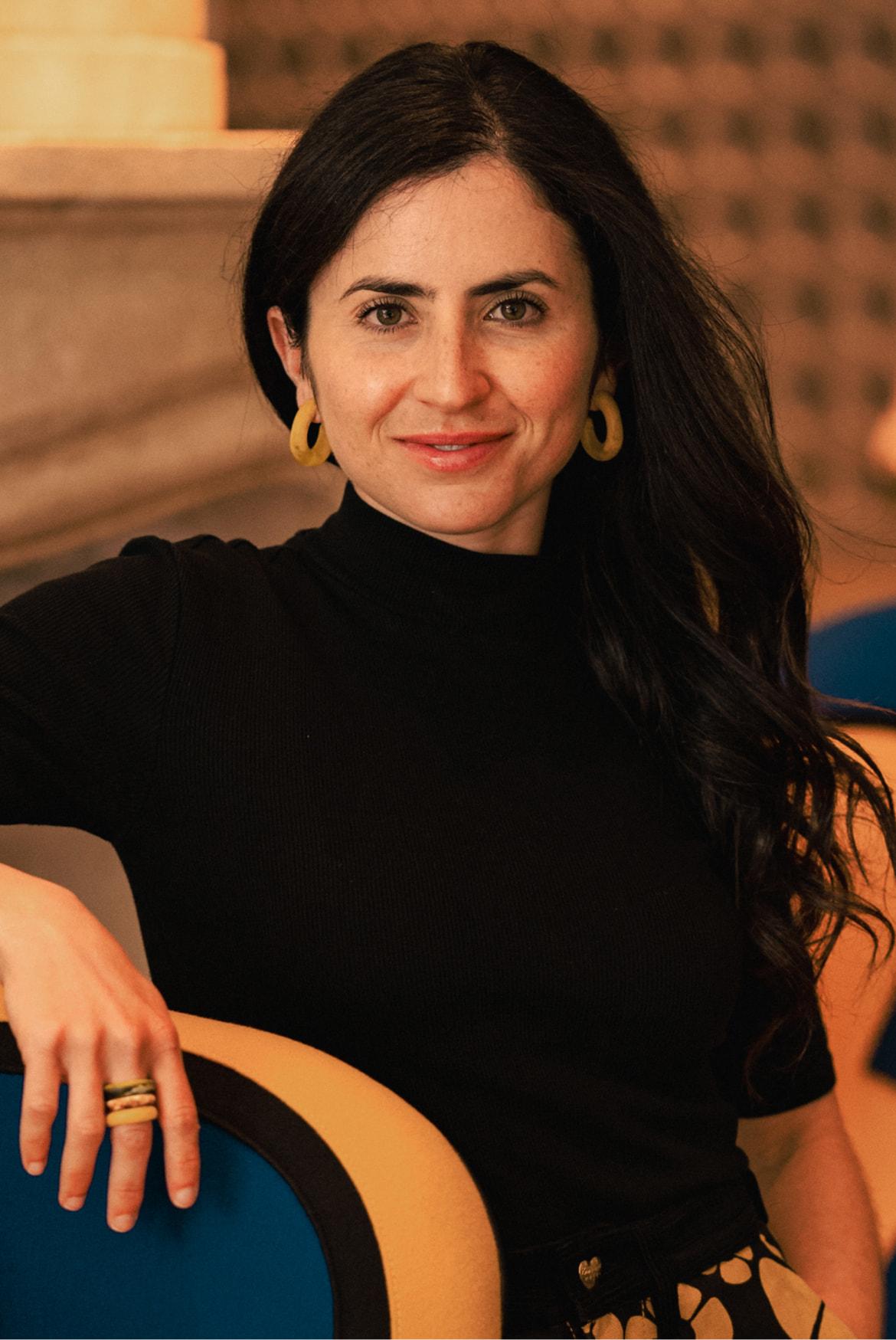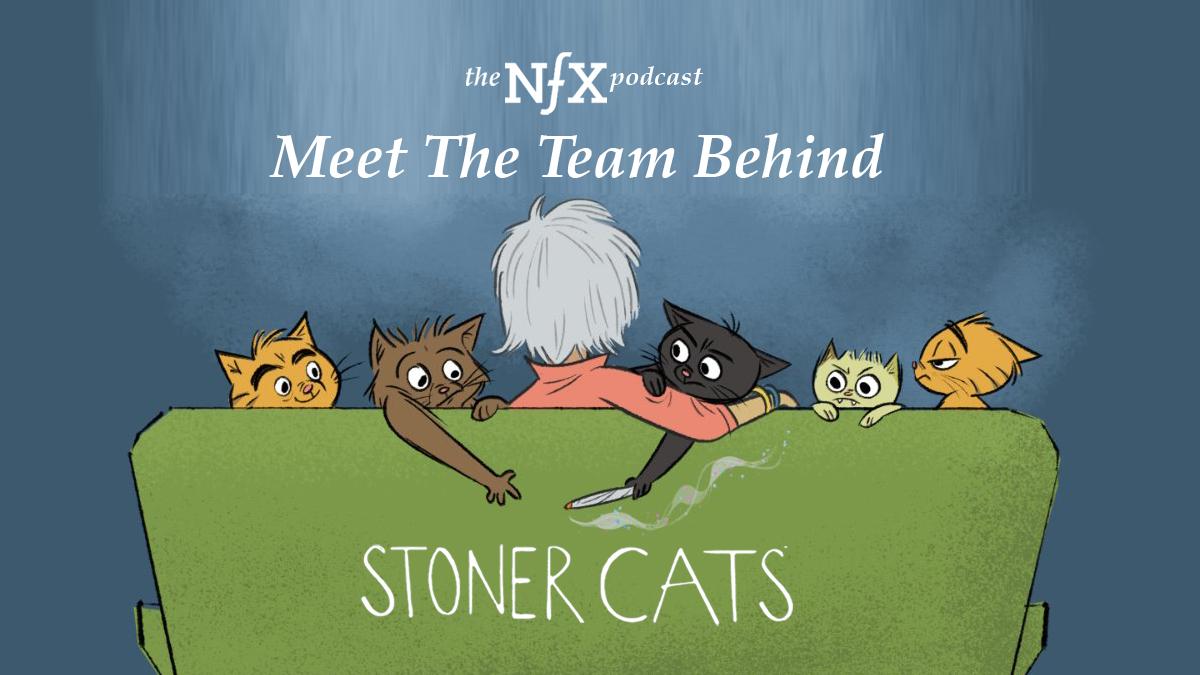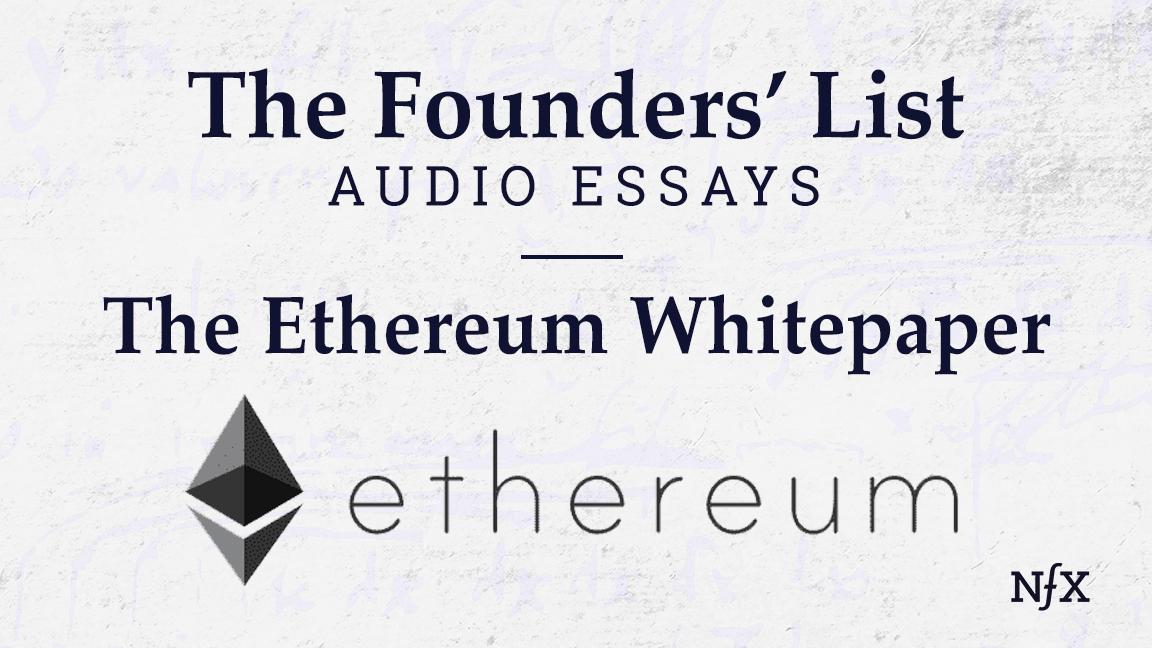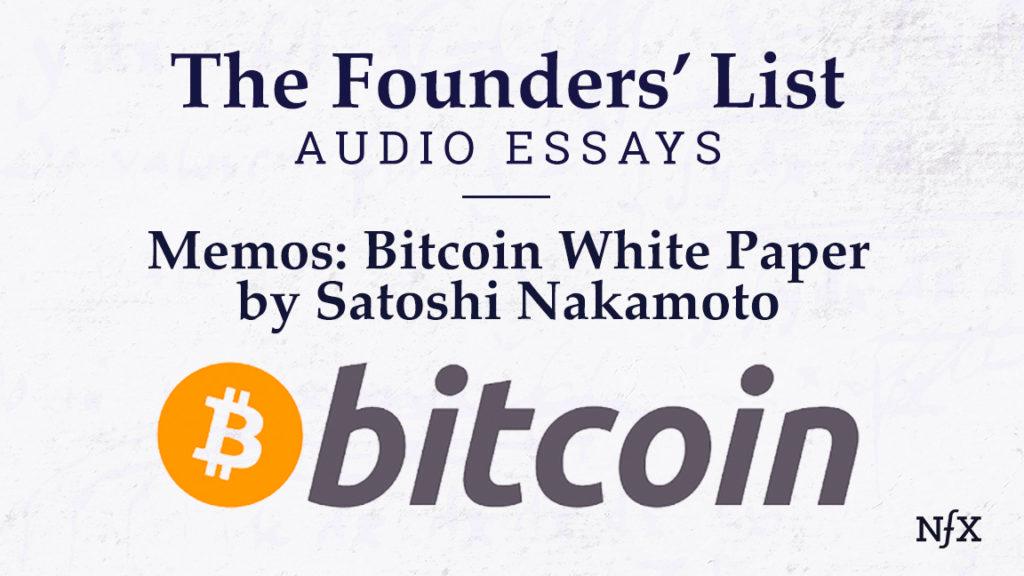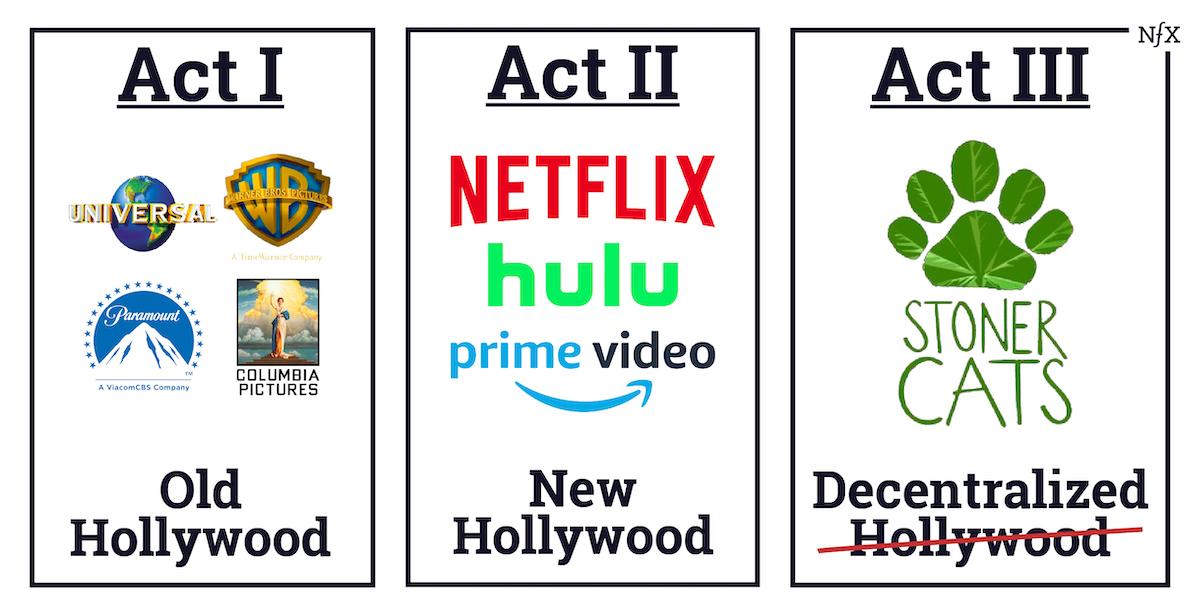

A lot of today’s standards were once perceived as stupid.
Just think of some examples we all know: Airbnb (“you’re going to pay to sleep on a stranger’s couch?”), Uber (“good luck with local regulation”) and Bitcoin (“excuse me? what?”). When I was at Facebook and we started dreaming up the idea of Libra, we had an idea of what we would hear.
That’s what it sounds like from the outside. But from the inside, the Founders and Creators who are experimenting early and often are losing sleep from excitement. They feel that they have seen something others do not.
This is how it is with the Stoner Cats team, who I’ve had the honor to work with over the last few months. They are pioneering a new NFT-based model for entertainment creation and community. They are bypassing the gatekeepers of legacy, institutional media by using the blockchain to bring A-list content to their fans.
The Stoner Cats experiment (the first experiment of, hopefully, many in this broader thesis) launched 2 days ago. We were confident in our hypothesis but, nonetheless, unbelievably humbled when the NFT cats sold out.
This is the inside story why.
Highlighted below are excerpts from my recent NFX podcast conversation with some of the team behind Stoner Cats, including:
The 3050 Gang: The 3050 Gang is one of the first all-female crypto teams building in the space. The team consists of Mila Kunis, Morgan Beller, Maaria Bajwa, & Lisa Sterbakov. Combined, our initials are MMML, which translates to 3050 in roman numerals.
Maaria Bajwa is at Ashton Kutcher’s Sound Ventures, where she leads their crypto everything. She is an NFT expert & self-described addict.
Lisa Sterbakov is a partner at Mila Kunis’s production company Orchard Farm.
Mack Flavelle founded a company called Big Head Club, which is handling the technology and community of Stoner Cats. Previously, he was the creative brains behind NBA Top Shots & famously, CryptoKitties.
Stoner Cats In Brief:
- “Stoner Cats” is a short animated series brought to you by a team that, cumulatively, has worked on Toy Story 2, Family Guy, Spider-Man: Into the Spider-Verse and more. It stars Mila Kunis (who is also leading the project), Ashton Kutcher, Chris Rock, Seth MacFarlane, and Jane Fonda.
- It also has a crypto cast: Vitalik Buterin plays one of the charactersTo watch it, you have to buy an NFT of one of the show’s cats. Each NFT costs 0.35 ETH ($785).
- In addition to the content, we hope and plan to add additional perks to ownership. One example is DAO membership (“The A-cat-emy”).
- It was an experiment. A new way to fund content creation, connecting creators and consumers directly, eliminating the old archetype of Hollywood that has been dictating what the world sees for far too long
- On July 28, 2021, Stoner Cats successfully sold 100% of the 10,420 NFTs.
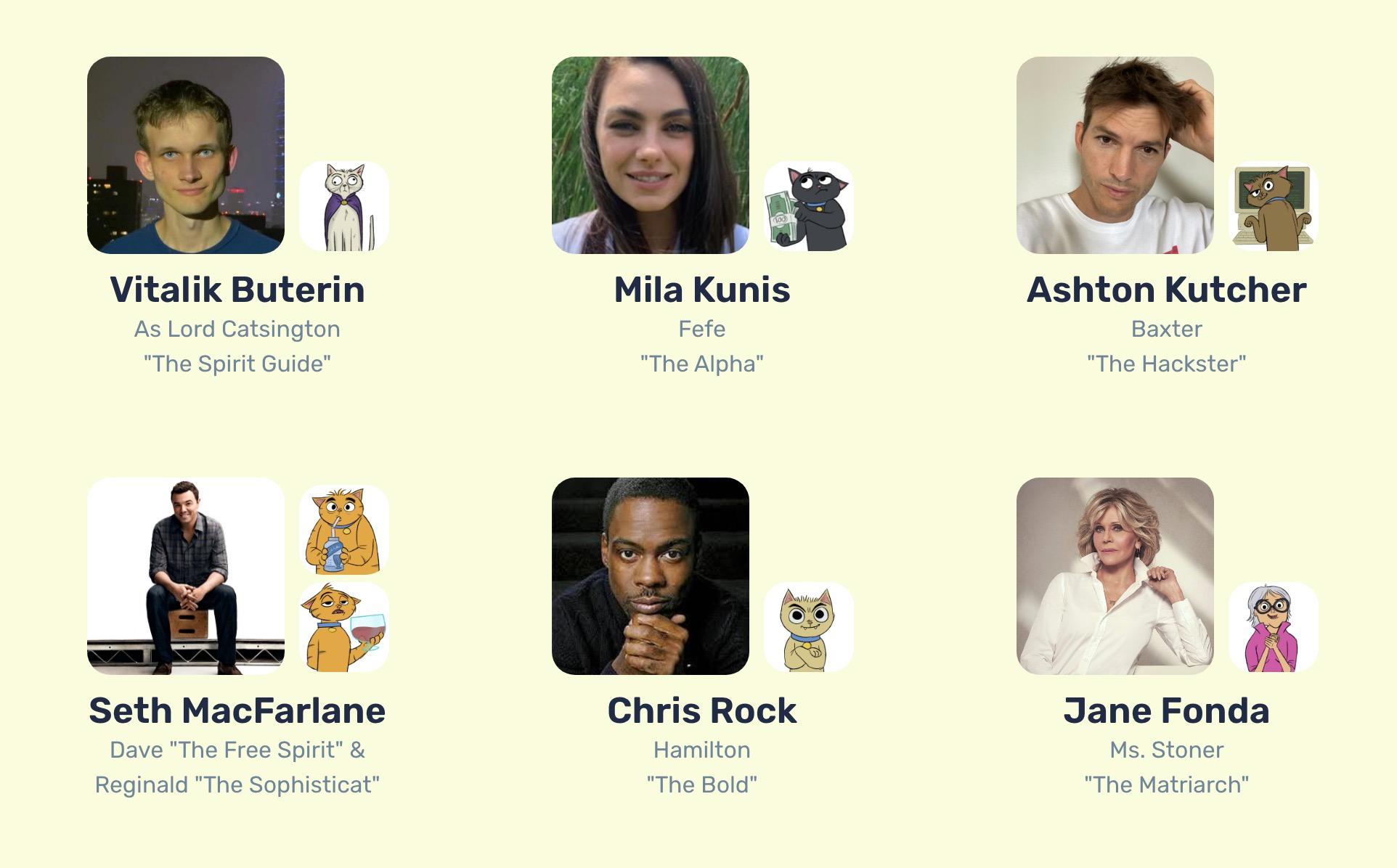

The Founding Story of Stoner Cats
It all started with a problem. Orchard Farms (Mila & Lisa’s production company) had a show that deserved to see the light of day.
Lisa: The why is the really big part of this for us. And when I’m speaking of us, I’m speaking of me and Mila together who have been developing this project for well over a year. We initially met with our three creators, Ash Brannon (directed Toy Story 2), Sarah Cole, and Chris Cartagena. The three of them are just the best of the best in terms of animation.
We’ve loved this project forever and we were having a hard time actually getting it launched off the ground in traditional Hollywood ways. First, the drug content was a detractor for Hollywood. And then, there is just a lot of animated content out there, particularly in the adult animation space. We were unexcited about the options that we had in terms of putting it out there — and wanted to think outside the box.
Bypassing the Gatekeepers
Morgan: Storytelling is a fundamental part of being human. Today, monolithic gatekeepers (networks & big studios, at the moment) decide which stories get told and disseminated to the masses. We see it every day in legacy institutional media.
But let’s say you have a really great story that deserves to see the light of day, and it can’t make it through these gates for a variety of reasons: “potentially controversial” is usually at the top.
In the case of Stoner Cats, it’s a beautiful narrative about life and love and loss… that happens to involve marijuana. The show is inspired by creator @SarahSoSweetly‘s mom who suffers from Alzheimers. It’s hard not to get goosebumps.
But we didn’t want to dumb it down or soften it up. We want to tell stories that resonate with audiences, not gatekeepers.
So, one way to do this is to crowdfund that content directly from the consumers who want it. Consumers who want to see and hear stories that otherwise wouldn’t be produced. Consumers who want to share in some of that creative control (and deservedly so) and belong to something.
One way the team saw to do that is to bring Hollywood/Entertainment, Crypto & Software worlds together.
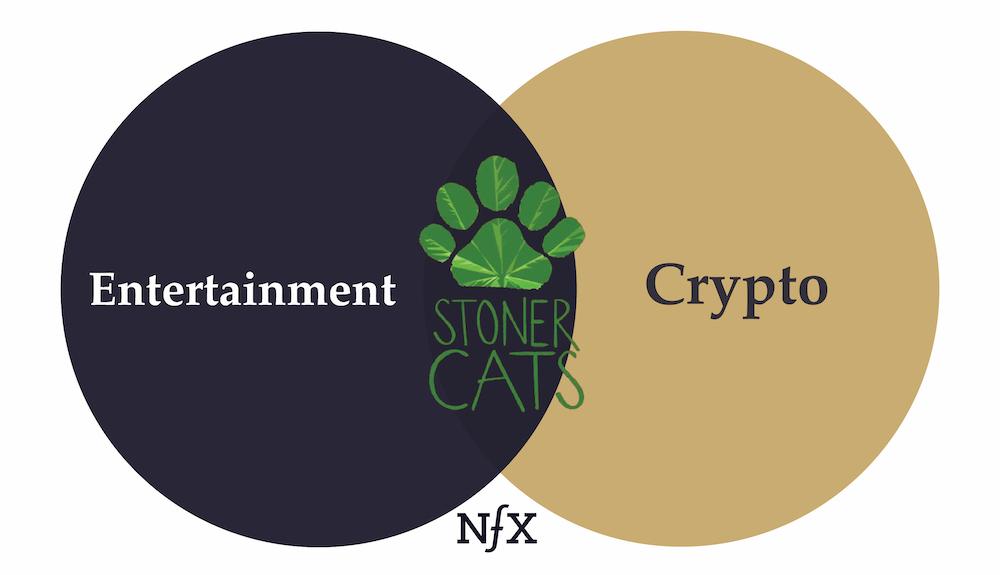

Quick, What’s An NFT?
The NFX audience probably knows, but we might have some people here who know what it is but don’t know how to explain it to their parents or friends, and want to share this with them.
Maaria: An NFT is a non-fungible token. It lives on the blockchain. Fungible (the opposite of non-fungible) is: If you have a dollar, a dollar is a dollar is a dollar – it’s the same thing, everywhere. So what non-fungible means: You have one thing and it’s different from another thing, so it’s not the same. It’s not composable. It’s not fungible.
NFTs are non-fungible tokens that are unique assets that live on the blockchain. They can be anything from digital art and collectibles, which is where more mainstream NFTs have come from. You can track plots of land with NFTs. (Think about that for a second). NFTs can be any individual unique item that lives on the blockchain that you want to track in perpetuity.
NFTs are like WoW Shoulders
Lisa: Back in the day, before we had kids, Mila and I played a lot of World of Warcraft. We both had little characters and we ran around and we’d five-man raid all the time. There was quite a group. You level up your armor, you level up your clothes. So I can understand getting excited about this virtual thing that can *do* something.
I loved the idea that I can have a virtual thing that provides me access to other things. The same way my fancy shoulders in World of Warcraft increase my DPS — our artwork, our virtual thing is going to offer you access to be able to consume really great, fun content and belong to a community. To me and to Mila, that was really exciting.
“Is this the best way for us to do this?”
Lisa: Mila and I were sitting there with our creators brainstorming one day, and she yelled over to Ashton and said, “Hey, hey! Could we do this as an NFT?” And Ashton said: “Absolutely. You know who you need to talk to. Maaria and Morgan. Two of the smartest women I have ever met in my life who know so much about this space.
Mack: Why does this need to be an NFT? Because I do think in the NFT space, you see a lot of a hammer in search of a nail. Everything is now an NFT, but doesn’t necessarily make sense.
Morgan: We pressure tested ourselves many times over about this. We constantly asked ourselves in our nightly standups: “Are we sure this needs to be an NFT? Are we sure this needs to be an NFT? Are we really sure this needs to be an NFT?!”
Once you are super clear on why you want to do something, the very best next question to ask tends to be: “Is this the best way for us to do this?” It’s a great question for all creators — and startup Founders — to ask themselves. It marries your idea with your execution.
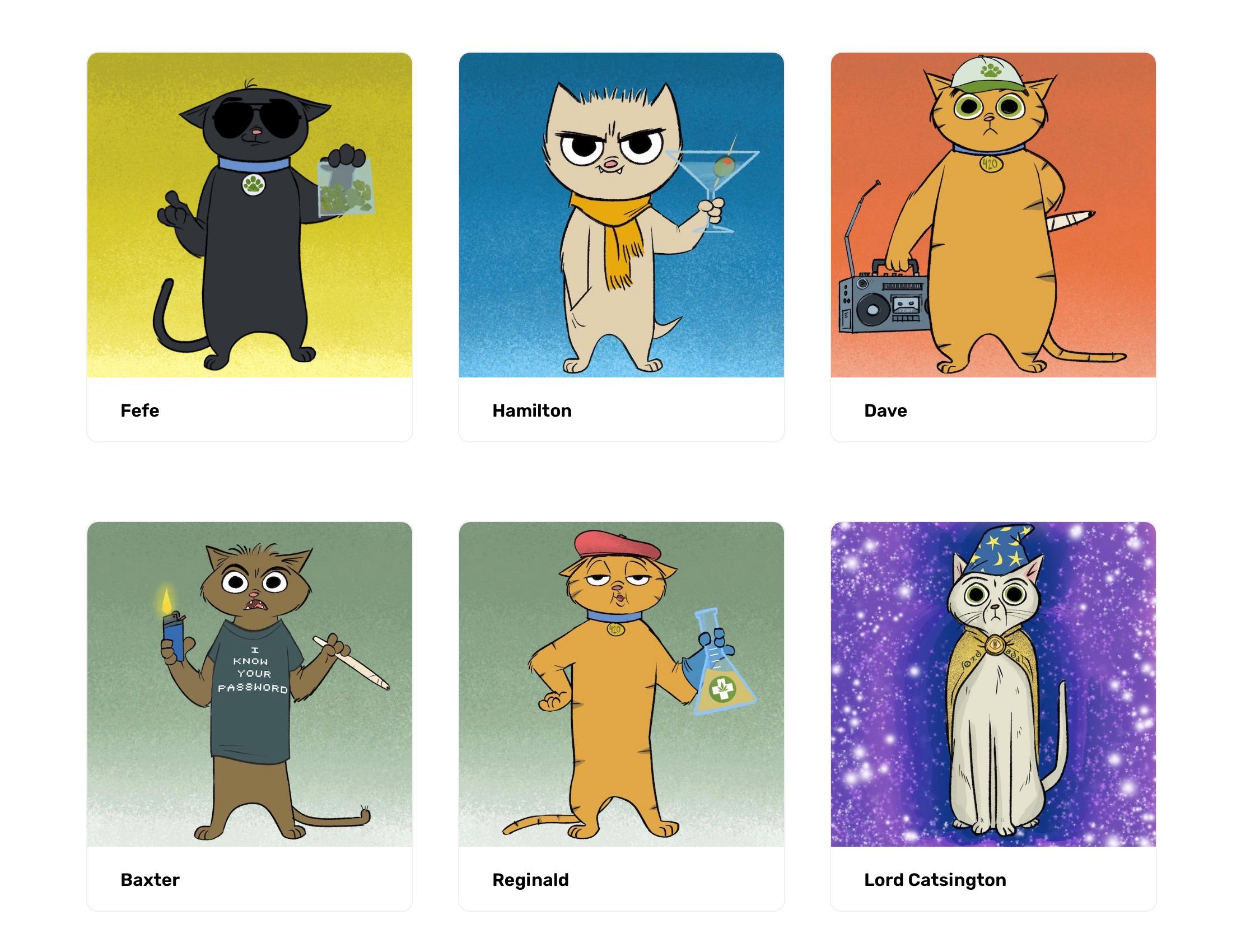

What If The Next Big Studio Is… A DAO?
Mack: We wanted to pave the way for fan-driven, creator-friendly content. We believe that content creators and fans should be able to connect and trade art directly without all the bureaucratic bullshit. With blockchain technology we believe there’s a whole new way for fans to engage directly with the content they want to watch and be a part of the content creation process.
Morgan: I mean, what if the next big studio is… a DAO.
Mack: We want to change how content is created and how crypto interacts with Muggles. (A friendly word to remind us — crypto people — that we still need to do a better job at communicating with the rest of the world, the noncrypto people.)
So why does it need to be in an NFT? What does an NFT get you? Maaria has really been pounding the table from day zero that you need to get more value than you put into the purchase. So what value does it unlock?
You can’t do X unless you own one, and X, you filled in that blank, what if you can’t watch the content? But I think what’s really interesting about the NFT space that’s emerging is it’s not just you can’t see the content, because people will find ways around that. It’s that you can’t be a member of the community. Not in the truest, realest, and most authentic sense of that word. That’s not even just about like, oh the community today, but that’s about the option to be a part of the community in the future.
NFTs As Access Tokens… “And And And”
Morgan: We all generally believe that there’s something there with this concept of using NFTs as access tokens. We like the idea of removing the middleman, from a funding perspective, while allowing the creators to maintain creative control, and even expand that creative vision to incorporate community input. There is something there, so we’re running an experiment with new content.
But, as Maaria frequently screamed at us: It’s not just an access token. It needs to also be its own piece of art. So, you get this wonderful piece of artwork that lives in the blockchain that then also provides you this other access.
I think we generally have this philosophy of and, and, and. So you’re getting a piece of art, and you’re getting community, and you’re getting access to watch the show, and you get to interact with the creators, and… We have the ellipses after the and, it just keeps going, and over time we add more and more to what you get for buying the NFT cat. That’s why it’s not just an access token.
Maaria: It’s like a nod to what we’re seeing already within the NFT ecosystem of all these avatar-based projects. But then there is an additional utility to it. I haven’t seen a lot of other projects that have added something like that.
Morgan: This notion of “and, and, and” is a great thing for other creators and Founders to ingest into their product philosophies. Just providing a value or service is table stakes. Creating the experience and community around it makes it better for every new person who joins. Network effects.
First Access Compounds For Future Value
Mack: In our thinking, not only do you have access to the first episodes and all of the above because you have the NFT, you get more, and it gets crazy from here. If we do our jobs right, you have the ability for that thing to grow, so that thing changes in value as the community expands and the power of that community, both the size and the power, extend and expand. If you have the grandfather or the grandmother’s key, if you have first access to that, that’s a very powerful, interesting thing.
The content is very obviously an extrinsic reward you get for owning this NFT. The community is possibly even more significant as an intrinsic reward for someone saying, “I believe in this, I see the future that these people see, and I know it’s a long shot, but I want to help these people make great stuff and get there, not just because I believe in it, but also because if they’re right, it’s going to be very good for me and all of the content I’m also going to create.”
Notice I did not say anybody was ever going to make any money because I would never begin to imply that. I am simply saying that there’s a lot of great content coming, and you would have the earliest of access, not only to be consuming that, but to being a part of bringing that to fruition. That’s a really neat place to be.
So NFT is the framework by which not just content, but communities can blossom, is a really neat thing about what we’re doing, if we manage to do it right.
“That’s not art. That’s stupid.”
Mack: Back in the day, we were given a lot of hell for Crypto Kitties and how stupid it was. It was during this apex of Silicon Valley hype when everyone had a cookie delivery startup. Somehow those people were getting all the hell for solving trivial problems, in the same week that we launched CryptoKitties. We were lumped in.
When we announced that Andreessen Horowitz and Union Square Ventures had invested $12M in cartoon cats on the blockchain, it was like the apocalypse to a bunch of people who said, “This is stupid. This is stupid. You have no idea how stupid this is.”
But as Chris Dixon wrote in his blog post, “The next big thing starts out looking like a toy.” My addition to Chris Dixon is that it’s not just technology, it’s culture. There are always moments where the establishment says, “That’s not art. That’s stupid.”
And then the kids are like, “Well, we’ll be over here. We’re hanging out, doing our thing, you don’t matter to us.” And that becomes really interesting. That becomes very powerful.


Decentralizing Great Entertainment Comes With Great Responsibility
Mack: Decentralizing the entertainment industry sounds like a first-world problem. There’s all these other problems that really matter, and that’s true, and we can have this argument of infinite ad nauseam, which is whether the work you’re doing matters.
But if we assume that we care about decentralizing major Western entertainment, which is an interesting problem to have, what I’ve come to understand is there are a very small number of gatekeepers. There’s a huge amount of attrition. It is just as hard to make a crappy thing as it is to make a good thing. Sometimes the thing that starts out good turns bad, and sometimes the thing that isn’t so great gets a great director and becomes good. But there are a lot of gatekeepers, and being able to kind of tear down the gatekeepers would be really exciting.
Lisa: I want to go back to the “first-world problem” criticism. I’m going to say something that you guys can all roll your eyes at: I truly believe that art in all of its forms exists to illuminate what it means to be human, and sometimes we can have really transformative moments as a community and as a people by viewing great stuff.
I know that we’re doing something called Stoner Cats, and this sounds ridiculous, but the journey of Mrs. Stoner and her cats is beautiful. There is humanity in it.
It’s also intellectually uninteresting to me to not push boundaries, to not be offensive sometimes, to not push it out there and then let people push back. Homogenizing, softening our content doesn’t make us smarter and it doesn’t bring us together anymore. You have to push some buttons to get people talking.
But you can’t push buttons if you are a big organization right now. So we sidestepped them.
Mack: This is true of technology organizations as well. The future is going to be impacted by our work here on this new Stoner Cats model regardless — better and for worse.
I leave open the possibility of worse, because models are only as good as the people who use them. There are still all the people who have the voice, who, in fact, you don’t want to have your voice. It’s not all good. There’s not only good that comes from this.
The internet destroyed the write, edit, publish order of operations. Now it goes write, publish, edit. The most dangerous thing on earth is Facebook. There is nothing more dangerous than a network of people without constraints.
So when we disintermediate gatekeepers and go straight to a network, we are aware of our responsibility.
As Founders ourselves, we respect your time. That’s why we built BriefLink, a new software tool that minimizes the upfront time of getting the VC meeting. Simply tell us about your company in 9 easy questions, and you’ll hear from us if it’s a fit.
Try ChatNFX
